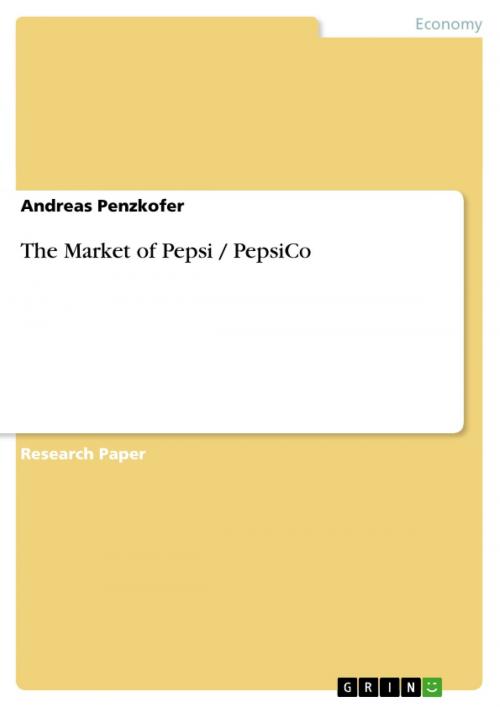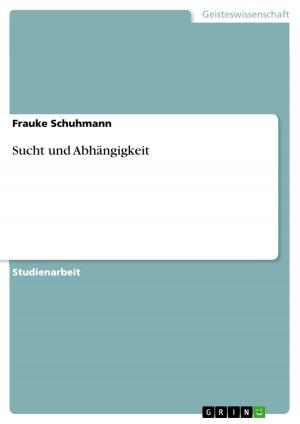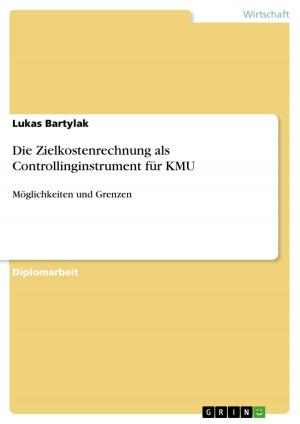| Author: | Andreas Penzkofer | ISBN: | 9783638453295 |
| Publisher: | GRIN Verlag | Publication: | January 10, 2006 |
| Imprint: | GRIN Verlag | Language: | English |
| Author: | Andreas Penzkofer |
| ISBN: | 9783638453295 |
| Publisher: | GRIN Verlag |
| Publication: | January 10, 2006 |
| Imprint: | GRIN Verlag |
| Language: | English |
Research Paper (postgraduate) from the year 2005 in the subject Economics - Industrial Economics, grade: 1,0, Wayne State University (Department of Economics), course: Industrial Organization, 40 entries in the bibliography, language: English, abstract: PepsiCo, one of the world's largest beverage and food companies, is presently focused on widen its business in Europe through the subsidiary PepsiCo International. In 2004, international sales accounted for $ 9,949 million - that is about one third of its group revenues. [Clark (European takeover targets), p. 31.] Recently, the company has negotiated and realized several acquisitions in Europe. In May 2005, PepsiCo bought the leading German juice maker Punica Getraenke. [Mercer (Europe's juice sector), p. 1.] In November 2005, it has reached agreement on the principal terms and conditions for the purchase of Sara Lee Corporation's European nuts business in the Netherlands, Belgium and France. [PepsiCo International (Sara Lee Nuts Business), p. 1.] With these investments, PepsiCo is driving an international expansion strategy. It aims growth outside the United States (U.S.) by adding local products to their global brands, until its traditional carbonated soft drink portfolio suffers from slower growth, and even some decline. [Mercer (Europe's juice sector), p. 1.] Using this situation as a background, it is interesting to analyze the market of PepsiCo. Who are the global competitors? What structure has the market, as the firm is seeking for growth? The goals of this research are to deduct the market of PepsiCo and to measure its structure by using significant ratios. First, PepsiCo will be briefly described and the contrast of a global and local view of the market will be compared. Afterwards the competitors of the firm will be named. The market will be split into the non-alcoholic beverage sector and the convenient food sector. Finally, the structure of these sectors will be measured by the concentration ratio and Hirschmann-Herfindahl-Index.
Research Paper (postgraduate) from the year 2005 in the subject Economics - Industrial Economics, grade: 1,0, Wayne State University (Department of Economics), course: Industrial Organization, 40 entries in the bibliography, language: English, abstract: PepsiCo, one of the world's largest beverage and food companies, is presently focused on widen its business in Europe through the subsidiary PepsiCo International. In 2004, international sales accounted for $ 9,949 million - that is about one third of its group revenues. [Clark (European takeover targets), p. 31.] Recently, the company has negotiated and realized several acquisitions in Europe. In May 2005, PepsiCo bought the leading German juice maker Punica Getraenke. [Mercer (Europe's juice sector), p. 1.] In November 2005, it has reached agreement on the principal terms and conditions for the purchase of Sara Lee Corporation's European nuts business in the Netherlands, Belgium and France. [PepsiCo International (Sara Lee Nuts Business), p. 1.] With these investments, PepsiCo is driving an international expansion strategy. It aims growth outside the United States (U.S.) by adding local products to their global brands, until its traditional carbonated soft drink portfolio suffers from slower growth, and even some decline. [Mercer (Europe's juice sector), p. 1.] Using this situation as a background, it is interesting to analyze the market of PepsiCo. Who are the global competitors? What structure has the market, as the firm is seeking for growth? The goals of this research are to deduct the market of PepsiCo and to measure its structure by using significant ratios. First, PepsiCo will be briefly described and the contrast of a global and local view of the market will be compared. Afterwards the competitors of the firm will be named. The market will be split into the non-alcoholic beverage sector and the convenient food sector. Finally, the structure of these sectors will be measured by the concentration ratio and Hirschmann-Herfindahl-Index.















